ALGAR DOS DIABRETES


[Graciosa – Azores]
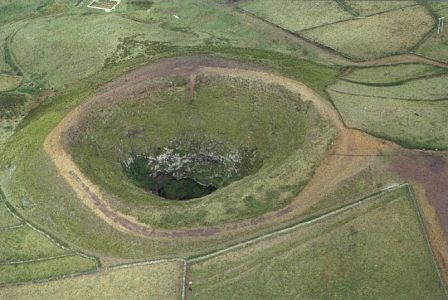
EARTHCACHE
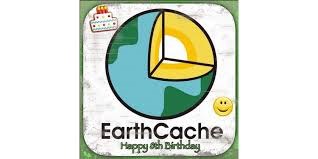
PORTUGUÊS

A CALDEIRINHA DE PÊRO BOTELHO
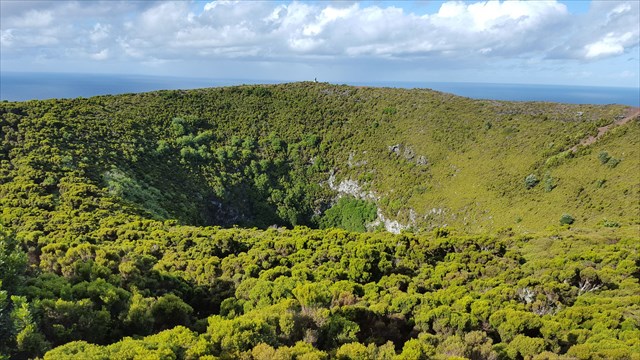
“A Caldeirinha de Pêro Botelho, local também conhecido por Algar dos Diabretes, ou simplesmente Caldeirinha, é uma gruta portuguesa localizada na freguesia de Guadalupe, concelho de Santa Cruz da Graciosa, ilha Graciosa, arquipélago dos Açores.
Esta cavidade apresenta uma geomorfologia de origem vulcânica em forma de algar em caldeira. O algar apresenta uma profundidade de 37 m, por um comprimento máximo de 33 m e por uma largura também máxima de 15 m. O tubo lávico associado apresenta uma altura máxima de 11 m, por um comprimento máximo de 41 m e por uma largura também máxima de 38 m.

Este é o único algar vulcânico conhecido nesta ilha, acessível através da cratera de um cone de salpicos de lava (spatter) recente, provavelmente de idade holocénica, sendo o único spatter cone (ou seja, um cone formado pela acumulação de “salpicos de lava” soldados) existente na ilha. Nesta zona predominam formações traquíticas (e. g. domos), usualmente de coloração clara.
Este algar está situado na Serra Branca e tem um acesso extremamente fácil à sua abertura. No entanto, de entre todas as grutas da ilha Graciosa, é atualmente a única que necessita de equipamento de escalada e de pessoal habilitado para se poder aceder ao seu interior. “Os Montanheiros” desceram e exploraram pela primeira vez este algar em 1964”. Para se ter acesso ao seu interior é necessário equipamento e conhecimento adequado das técnicas de exploração espeleológica.
CAVIDADES VULCÂNICAS
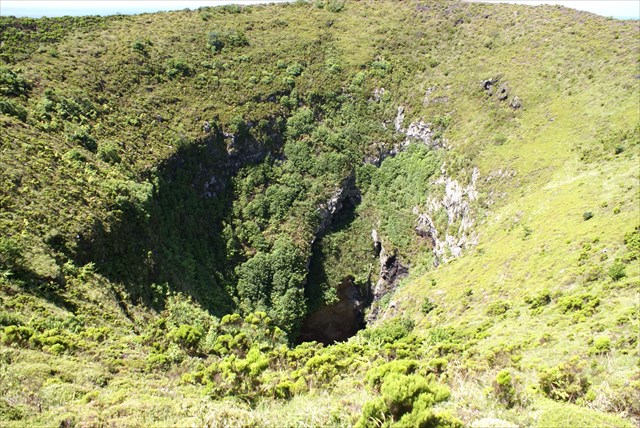
As cavidades vulcânicas (tubos lávicos e algares vulcânicos) formam-se rapidamente após o fim de uma erupção, ao contrário das grutas calcárias que podem demorar milhares de anos a se desenvolver, mas são em geral mais efémeras. O tempo médio de vida de um tubo de lava varia entre 100 000 a 500 000 anos, dependendo do clima e da erosão a que estão expostos, enquanto os algares vulcânicos em geral persistem por mais tempo. Assim sendo, não é com surpresa que o Pico, a ilha mais recente dos Açores com uma idade geológica de aproximadamente 250 000 anos, possua o maior número de cavidades vulcânicas do arquipélago, nem que estas sejam mais abundantes em zonas de vulcanismo recente em ilhas mais antigas, como no complexo vulcânico dos Picos em São Miguel.
A lenda da Caldeirinha - Graciosa - Açores – Portugal
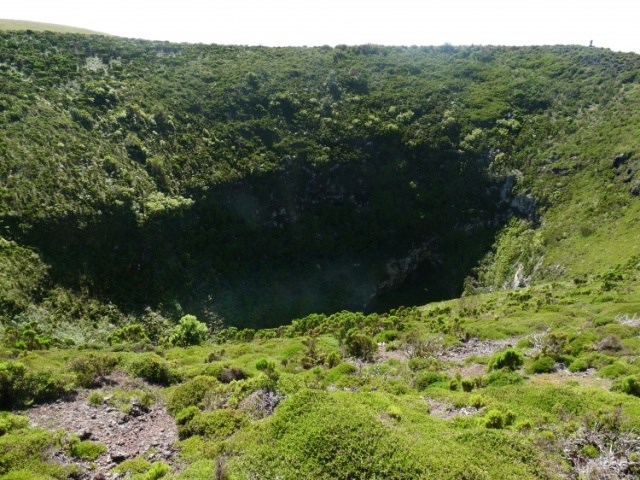
“Era uma vez uma mulher de Guadalupe, na Graciosa, que ía casar uma filha em poucos dias. Estavam a fazer as cozeduras e, com todos os preparativos, a mulher já tinha gasto muito do pouco que tinha. É que para casar uma filha são gastos e mais gastos. .Numa certa altura, a mulher já estava farta de puxar pela carteira e, arrenegada, virou-se para a filha e disse: Vai-te com o diabo, rapariga, que me levas tudo o que tenho! Ninguém prestou atenção a estas palavras, mas passado pouco tempo, quando foram pela rapariga, não a encontraram em casa nem na vizinhança. Toda a gente ficou muito aflita, principalmente os pais e o noivo. Começaram então a procurar em lugares mais distantes, até que, sem saber mais onde procurar, foram para a serra e chegaram junto de um algar a que chamam de Caldeirinha. Desceram o mais depressa que puderam a vereda perigosa que conduz até à entrada de forma arredondada que conduz não se sabe onde? Ainda mais surpresas e aflitos ficaram, quando viram ali as galochas da rapariga e acreditaram que ela estava dentro da Caldeirinha. Foram buscar cordas muito fortes, ataram-nas umas às outras e o noivo amarrou-se. Cheio de medo por não saber o que ia encontrar lá dentro, foi descido pelo buraco escuro e medonho. No fundo encontrou a infeliz rapariga, tremendo de medo e aparvalhada. Amarrou-a também com as cordas e lá subiram os dois. O pior estava passado! Mas quando questionaram a rapariga como tinha ido ali parar, ela não sabia ao certo. Então a mãe lembrou-se da blasfémia que tinha dito, tendo-a entregue ao diabo. Ele, que anda sempre à procura de almas, levara-a logo para o lugar onde se costumava esconder, a Caldeirinha”.
HISTÓRIA DO LOCAL
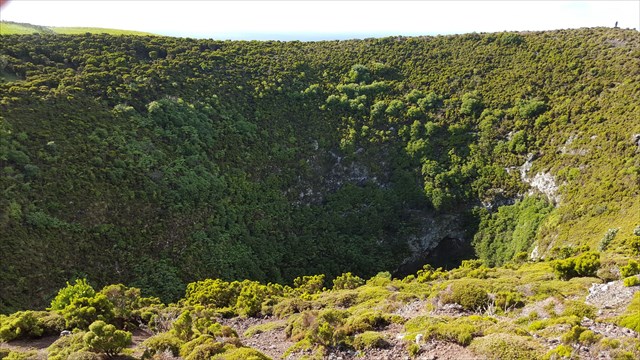
Embora não seja do nosso conhecimento desde quando e porquê a designação da Caldeirinha Pêro Botelho, tudo leva a crer se dever ao facto de esse ser o nome do seu proprietário nos séculos XVI ou XVII altura em que surgem os Botelhos na Graciosa.
ILHA GRACIOSA

A bonita Ilha Graciosa, intitulada de Ilha Branca por Raul Brandão, situa-se no Grupo Central do maravilhoso Arquipélago dos Açores, distando da vizinha Ilha de São Jorge 37 km, e ocupando uma área de cerca 62km2, com 12,5 km de comprimento e 8,5 km de largura máxima. Esta é Ilha menos acidentada geograficamente de todo o Arquipélago, dona de paisagens de grande deslumbre e de um património arquitetónico, humano e natural de grande valor.
As datas de descobrimento do Arquipélago dos Açores são uma incógnita, existindo correntes históricas que afirmam já virem designados em mapas Genoveses desde 1351, contudo foi a partir de 1431 que as Ilhas começaram a ser povoadas. Pensa-se que a Ilha Graciosa terá sido descoberta por volta de 1450, provavelmente por navegadores vindos da ilha… Terceira, que pela sua beleza natural se terão apaixonado, sendo maioritariamente povoada por naturais das regiões da Beira e do Minho, do continente Português, e também da Flandres.
Local de férteis terrenos, desde cedo foram inseridos novos cultivos, trazido gado para pastagem e plantados vários campos de vinha, realizando-se as trocas comerciais com a Ilha Terceira, dona de um importante e movimentado porto marítimo. A Graciosa, dada a sua baixa altitude e costa facilmente aportável, foi alvo de ataques Piratas e Corsários, sofrendo também diversas catástrofes naturais como sismos e tempestades, que em muito a prejudicaram, contudo o crescimento da Ilha foi acontecendo, fixando uma população considerável.
A Graciosa encanta pela sua beleza natural, pela sua arquitetura tradicional de casario alvo e povoamento disperso, que contrasta com os tons escuros da herança vulcânica e o basalto, o verde dos campos de cultivo e pasto, o azul profundo do vasto Oceano Atlântico que a circunda. O património natural conta com pérolas como as Furnas do Enxofre, um fenómeno vulcânico, com uma lagoa com 130 metros de diâmetro e 100 de profundidade de águas quentes e sulfurosas no interior de uma gruta, e a da Maria Encantada; os Miradouros naturais no Monte da Ajuda, sobranceiro á bonita vila de Santa Cruz, e da Caldeirinha; as afamadas Termas do Carapacho, indicadas para o tratamento de doenças reumáticas e da pele; As Serras Branca e Dormida; ou a fantástica Reserva Florestal Natural da Caldeira da Graciosa.
Muito mais há para conhecer, ver e apreciar nesta pequena e “graciosa” Ilha, como o Museu Etnográfico que melhor demonstra o estilo de vida rural e a história da Ilha ao longo dos tempos, bem como os muitos monumentos religiosos, rurais e sociais que a Graciosa oferece.
Terra de tradição, férteis solos e pastagens e a influência do rico Oceano Atlântico, na ilha Graciosa a Gastronomia típica reúne pratos de exceção com a melhor carne, peixe, marisco, vegetais, sendo também famosa pela sua pastelaria e doçaria, com as Queijadas e os Pastéis de Arroz, entre outras iguarias, tudo regado com os apreciados vinhos brancos e aguardentes velhas que aqui se produzem.

PARA REALIZAR E REGISTAR ESTA EARTHCACHE:
PERGUNTAS:
Para “encontrar/registar” esta cache deverá: provar que esteve no local e responder às seguintes questões, enviando um email/mensagem de Geocaching, com as respostas, em português ou em inglês, para o nosso perfil.
Só depois, de enviar as respostas, e conforme as “guidelines” para as Earthcaches, deverá efetuar o seu registo!
Serão removidos todos os registos que não obedeçam a estes requisitos.
1. A partir do tema geológico desta earthcache, responde às seguintes questões:
a) Explica, por palavras tuas, o que é um “algar vulcânico”.
b) Qual é a idade aproximada deste algar?
c) O que é um “cone spatter”?
d) Quantos algares existem na ilha Graciosa?
2. Na zona do GZ, existe uma placa colocada num “poste” do Geoparque Açores.
a) De que tipo de rocha é constituído o material desta placa/poste?
b) A partir do GZ é possível observar o fundo deste algar?
c) Qual é a cor das rochas do algar observáveis a partir do GZ?
d) Dado que o algar representa em termos geológicos um spatter cone; um agregado de pedaços de rocha vulcânica, conseguem observar aspetos desta aglomerado ou não? Nos casos positivo ou negativos, descreve a textura da rocha.
3. A partir do GZ, dirige-te, pelo trilho ao marco geodésico existente no outro lado do algar. Utilizando o teu GPS, estima, com a precisão de 5 metros, o diâmetro exterior deste algar (medido do GZ, ao marco geodésico).
4. TAREFA OBRIGATÓRIA:Deverá tirar uma foto sua, onde você apareça (ou com um papel/placa onde conste o seu nickname e a data da visita) e que comprove a sua presença no GZ desta EC - NÃO META SPOILERS. Esta foto deverá ser colocada no seu registo ou enviada por email ou sistema de mensagens de Geocaching, para o owner!
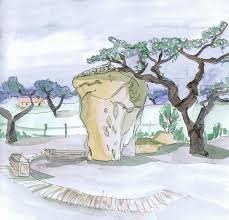
Não responderemos ao seu contato, a não ser que haja algum “problema” com as suas respostas ou registo.

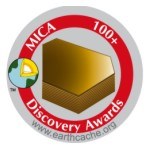
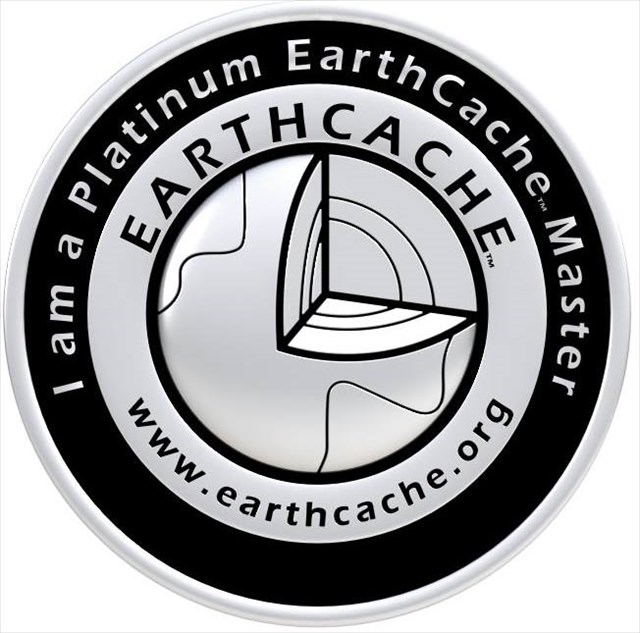

ALGAR OF “DIABRETES”
[Graciosa – Azores]
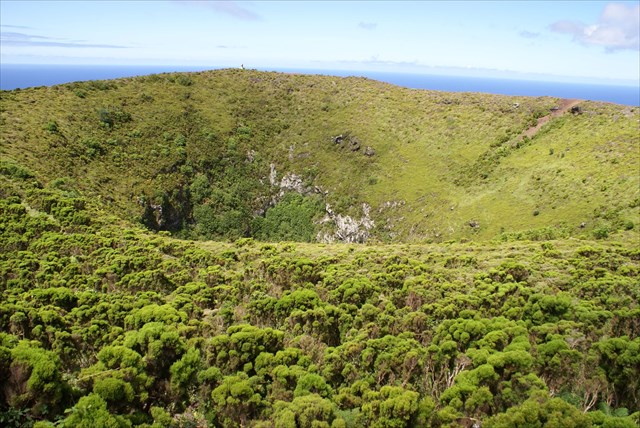
EARTHCACHE

ENGLISH

THE “CALDEIRINHA DE PÊRO BOTELHO”
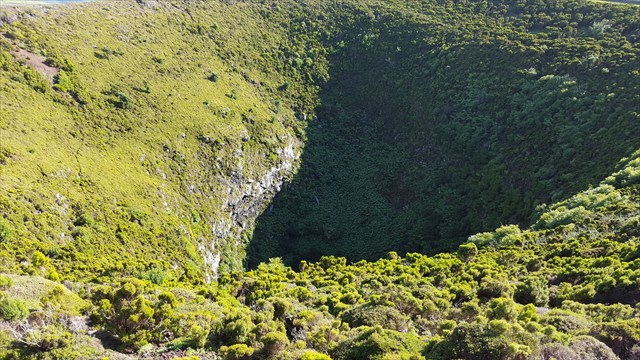
"The Caldeirinha of Pero Botelho, place aka Algar of Goblins, or simply Caldeirinha, it is a Portuguese cave located in the town of Guadalupe, municipality of Santa Cruz Graciosa, Graciosa, Azores.
This cavity has a geomorphology of volcanic origin in the form of algar boiler. The algar has a depth of 37 m, with a maximum length of 33 my also by a maximum width of 15 m. The lava tube has associated a maximum height of 11 m, for a maximum length of 41 me also by a maximum width of 38 m.
This is the only volcanic grotto known this island, accessible from the crater of a lava spatter cone (spatter) recent, probably of Holocene age, the only spatter cone (ie a cone formed by the accumulation of "lava spattering "Soldiers) on the island. Traquíticas formations predominate in this area (eg domes), usually light-colored.
This grotto is situated in the White Mountains and has an extremely easy access to your opening. However, of all the caves of Graciosa, is currently the only one that requires climbing equipment and qualified personnel to gain access to its interior. "The Montanheiros" down and explored for the first time this grotto in 1964 ". To gain access to its interior is necessary equipment and adequate knowledge of speleological exploration techniques”.
VOLCANIC CAVITIES
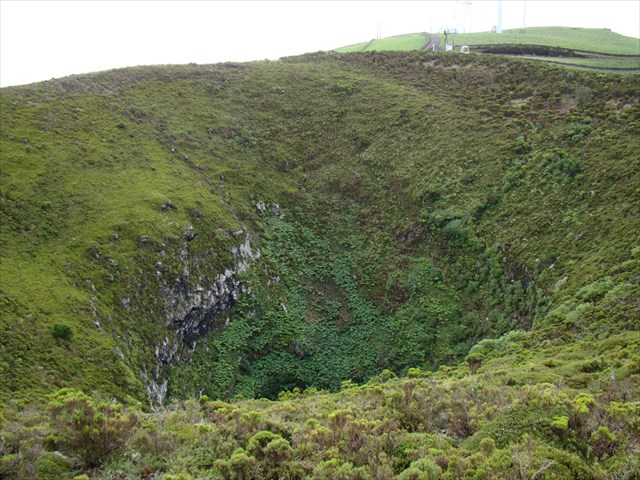
Volcanic cavities (volcanic lava tubes and potholes) are formed quickly after the end of a burst, unlike limestone caves that can take thousands of years to develop, but are generally more ephemeral. The average lifespan of a lava tube ranges from 100,000 to 500,000 years, depending on climate and erosion to which they are exposed, while the volcanic ravines generally persist for longer. It is therefore not surprising that the Peak, the latest island of the Azores with a geological age of about 250,000 years, has the highest number of volcanic cavities of the archipelago, or that they are more abundant in recent volcanic zones on islands older, as in the volcanic complex of Peaks in San Miguel.
The legend of Caldeirinha - Graciosa - Açores –
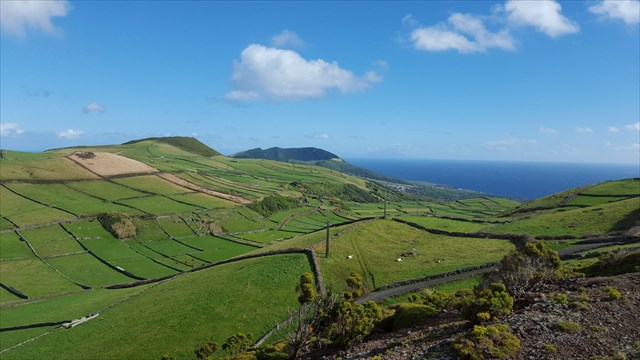
“There once was a woman of Guadalupe, Graciosa, which was going to marry a daughter in a few days. Were doing the cooking and, with all the preparations, the woman had already spent much of the little he had. Is that to marry a daughter are spending and more spending. .Numa One point, the woman had had enough to pull the portfolio and, ombre, turned to her daughter and said: - Go with the devil, girl, that you bear me everything I have! Nobody paid attention to these words, but after a while, when they were the girl, not found at home or in the neighborhood. Everyone was very distressed, especially parents and the groom. Then began looking at more distant places, until, not knowing where else to look, they went to the mountains and arrived at a grotto they call Caldeirinha. Down as fast as he could the dangerous path that leads to the entrance rounded leading who knows where? Even more surprises and were distressed when they saw the galoshes girl and believed she was inside the Caldeirinha.
They took a lot stronger ropes, tied them to each other and the groom tied it. Filled with fear not knowing what he would find inside it was down the dark and ghastly hole. At the bottom he found the unhappy girl, trembling with fear and aparvalhada. He also tied with ropes and there went up the two. The worst was past! But when questioned as the girl had gone there to stop, she did not know for sure. Then the mother remembered the blasphemy he had said, and delivered it to the devil. He who always is looking for souls, brought it right to the place where they used to hide the Caldeirinha”.
LOCAL HISTORY

Although not as we know since when and why the designation of Caldeirinha Pero Botelho, it seems to be due to the fact that being the name of their owner in the sixteenth or seventeenth time when Botelhos on Graciosa arise.
GRACIOSA ISLAND
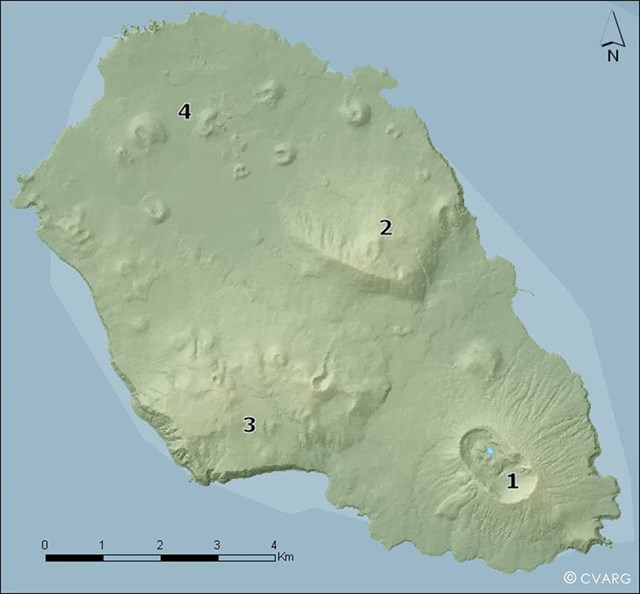
The beautiful Graciosa, titled White Island by Raul Brandão, is located in the beautiful Central Group Azores, distant from the nearby island of São Jorge 37 km, and occupying an area of about 62km2, with 12.5 km long and 8.5 km at its widest. This is less geographically rugged island of the archipelago, owner of great marvel of landscapes and an architectural heritage, human and natural great value.
The discovery dates of the Azores Archipelago are unknown, with several historical researches affirming that already referred in Genovese maps since 1351, yet it was from 1431 that the islands began to be populated. It is thought that the Graciosa Island have been discovered around 1450, probably coming browsers Terceira island, which for its natural beauty to have passionate, and mostly populated by natural regions of Beira and Minho, the continent Portuguese, and also of Flanders.
Place of fertile land, early were inserted new crops, brought cattle to pasture and planted several vines fields, carrying out trade with Terceira, owner of an important and busy seaport. Graciosa, given its low altitude and coast easily aportável, was the target of attacks Pirates and Corsairs, also suffering various natural disasters such as earthquakes and storms, which in very damaged, but the growth of the island was happening, securing a sizeable population.
The Graciosa charms for its natural beauty, for its traditional architecture of white houses and sparsely populated, which contrasts with the dark tones of volcanic heritage and basalt, the green of cultivated fields and pasture, the deep blue of the vast Atlantic Ocean that surrounds. The natural heritage features such gems as the Furnas Sulphur, a volcanic phenomenon, with a pond with 130 meters in diameter and 100 deep hot and sulphurous waters inside a cave, and the Maria Encantada; natural Viewpoints in the Help Monte, will pretty overlooking village of Santa Cruz, and Caldeirinha; the renowned SPA Carapacho indicated for the treatment of rheumatic disorders and skin; The White Overnight and saws; or the fantastic Natural Forest Reserve Graciosa Caldera.
Much more there is to know, see and enjoy in this small and "gracious" island, as the Ethnographic Museum that best demonstrates the rural lifestyle and the history of the island over the years, as well as many religious, rural and social monuments Graciosa offers.
Land of tradition, fertile soils and pastures and the influence of the rich Atlantic Ocean in Graciosa the typical Gastronomy assembles exception of dishes with the best meat, fish, seafood, vegetables, and is also famous for its pastries and sweets, with Queijadas and the rice crayons, among other delicacies, all washed down with prized white wines and aged brandies that are produced here.
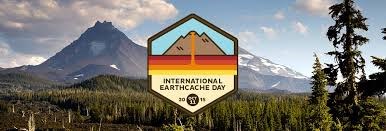
TO PERFORM AND LOG THIS EarthCache:
QUESTIONS:
To "find / register" this cache must: prove that visited the site and answer the following questions by sending an email / message Geocaching, with answers (in Portuguese or in English, only) to our profile.
Only later, sending the answers, and as the "guidelines" for EarthCaches should make your registration! They will be removed from all records that do not meet these requirements.
1. From the geological theme of this EarthCache, answer the following questions:
a) Explain, in your words, what is a "volcanic grotto."
b) What is the approximate age of this grotto?
c) What is a "spatter cone"?
d) How many potholes exist in Graciosa Island?
2. In the area of GZ, there is a plate placed in a "pole" of the Azores Geopark.
a) What kind of rock is made of the material in this card / post?
b) From the GZ you can see the bottom of this grotto?
c) What is the color of the grotto rocks observable from the GZ?
d) Since the altar is geologically one spatter cone; an aggregate of
pieces of volcanic rock, can observe aspects of this cluster or not?
The positive or negative cases, describes the rock texture.
3. From the GZ directs you, by rail to the existing geodetic framework across the grotto.
Using your GPS, estimated to an accuracy of 5 meters, the outer diameter of this algar (measured from GZ, the geodesic mark).
4. TASK (not optional): You must take a picture of yourself, where do you show up, (or with a paper / plaque with your geocaching nickname and the date of the visit) and that proves your presence in the GZ of this EC - no spoilers please. This photo must be placed in your log or sent by email or Geocaching messaging system, to the owner!
We do not respond to your touch, unless there is a "problem" with their answers or register.



